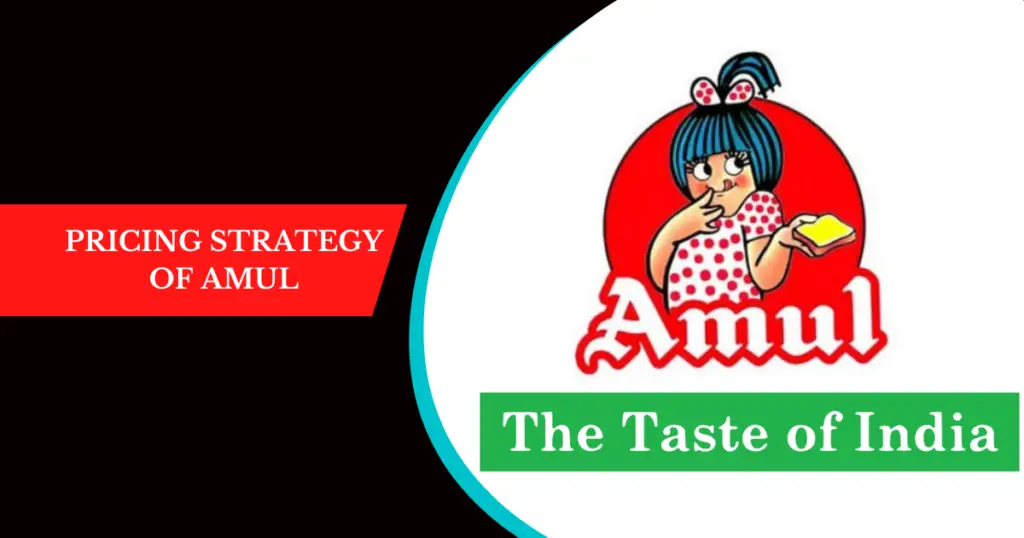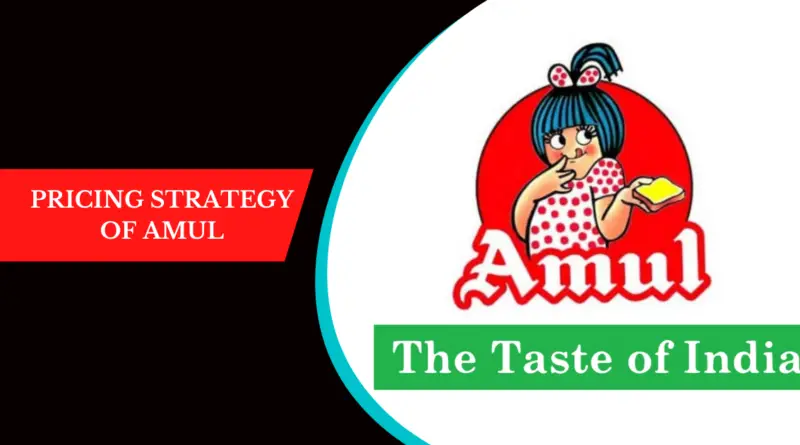The Pricing Strategy of Amul: A Comprehensive Analysis
Amul, the iconic dairy brand of India, has established itself as a household name since its inception in 1946. Operated by the Gujarat Cooperative Milk Marketing Federation (GCMMF), Amul is not just a dairy brand; it is a cooperative movement that has empowered millions of farmers in India. One of the critical factors behind Amul’s success is its effective pricing strategy, which balances profitability with consumer affordability. This blog explores the nuances of Amul’s pricing strategy, its implications for the brand’s growth, and how it aligns with its broader business objectives.
Understanding Amul's Market Position

The Cooperative Model
Amul’s cooperative model is central to its pricing strategy. Unlike traditional corporations focused primarily on profits, Amul operates on a principle of mutual benefit. The profits generated are reinvested in the cooperative, ensuring fair prices for both farmers and consumers. This model fosters loyalty among the dairy farmers, who are also stakeholders in the brand, contributing to consistent milk supply and quality assurance.
Product Range
Amul offers a diverse range of dairy products, including milk, butter, cheese, ice cream, and yogurt. This product variety allows Amul to cater to different market segments, from everyday consumers to premium buyers, enabling a multi-tier pricing strategy. The extensive product portfolio not only enhances brand recognition but also allows Amul to position itself strategically in various segments of the dairy market.
Key Elements of Amul’s Pricing Strategy
1. Cost-Plus Pricing
One of the primary pricing strategies employed by Amul is cost-plus pricing. In this approach, the cost of production is calculated, and a fixed margin is added to determine the selling price. Given that Amul is a cooperative, the emphasis is on covering production costs while ensuring reasonable returns to farmers. This transparent pricing mechanism fosters trust among consumers, as they understand that the prices reflect the real cost of production.
2. Competitive Pricing
Amul’s pricing strategy is significantly influenced by competition in the dairy market. With numerous local and national players vying for market share, Amul adopts a competitive pricing strategy to maintain its market position. The company frequently monitors competitors’ prices and adjusts its own accordingly. This agility helps Amul remain attractive to price-sensitive consumers while ensuring it does not compromise on quality.
3. Psychological Pricing
Amul employs psychological pricing to make its products more appealing. For example, pricing products at ₹49 instead of ₹50 creates a perception of affordability. This strategy is particularly effective in the Indian market, where consumers are often driven by price perceptions. By setting prices just below a round number, Amul can enhance its marketability and encourage impulse purchases.
4. Premium Pricing for Select Products
While Amul is known for its affordability, it also strategically uses premium pricing for certain high-quality products, such as gourmet cheeses and specialty ice creams. This approach allows Amul to target higher-income consumers who are willing to pay more for superior quality. Premium pricing not only boosts profit margins but also elevates the brand’s prestige, positioning Amul as a leader in the premium dairy segment.
5. Penetration Pricing
To capture new markets and expand its consumer base, Amul often uses a penetration pricing strategy. When launching new products, Amul may set lower initial prices to encourage trial among consumers. Once the product gains traction and market acceptance, prices may gradually increase. This strategy is especially effective in rural areas, where price sensitivity is higher, and helps Amul establish a strong foothold.
6. Seasonal Pricing
Given the seasonal nature of milk production and consumption, Amul adapts its pricing strategy based on demand fluctuations. During peak seasons, such as festivals or summer months when ice cream sales surge, Amul may increase prices slightly. Conversely, during lean periods, prices may be adjusted downwards to maintain consumer demand. This dynamic pricing approach ensures consistent sales throughout the year.
Implications of Amul's Pricing Strategy
1. Brand Loyalty
Amul’s pricing strategy fosters brand loyalty among consumers. By offering high-quality products at reasonable prices, Amul has created a strong emotional connection with its customers. This loyalty is reflected in Amul’s extensive market reach, with the brand enjoying a 40% market share in the Indian dairy sector.
2. Support for Farmers
A significant aspect of Amul’s pricing strategy is its direct benefit to dairy farmers. By ensuring fair pricing, Amul has empowered millions of farmers, providing them with stable incomes and improving their livelihoods. This support has resulted in a consistent supply of high-quality milk, further enhancing the brand’s reputation.
3. Sustainable Growth
Amul’s pricing strategy contributes to its sustainable growth. The cooperative model ensures that profits are reinvested into the business, promoting innovation and expansion. As Amul continues to diversify its product range and enter new markets, its pricing strategy will play a crucial role in maintaining its competitive edge.
Challenges and Future Directions
Despite its successes, Amul faces several challenges in its pricing strategy. The dairy industry is highly competitive, with increasing pressure from organized and unorganized sectors. Additionally, fluctuations in raw material costs can impact pricing strategies. To address these challenges, Amul may need to adopt more sophisticated pricing models, such as value-based pricing, where prices are determined based on perceived customer value rather than just production costs.
Moreover, as consumer preferences evolve, especially among younger generations, Amul may need to rethink its pricing strategy to accommodate trends like health consciousness and sustainability. Offering organic and health-focused products at competitive prices could be a potential avenue for growth.
Conclusion
Amul’s pricing strategy is a multifaceted approach that balances the needs of consumers and farmers while ensuring sustainable growth. By employing a combination of cost-plus, competitive, psychological, and premium pricing strategies, Amul has successfully established itself as a leader in the dairy market. As the company continues to adapt to changing market dynamics and consumer preferences, its pricing strategy will remain a crucial element of its success. Ultimately, Amul’s commitment to quality, affordability, and farmer empowerment has solidified its position as a beloved brand in India and beyond.



